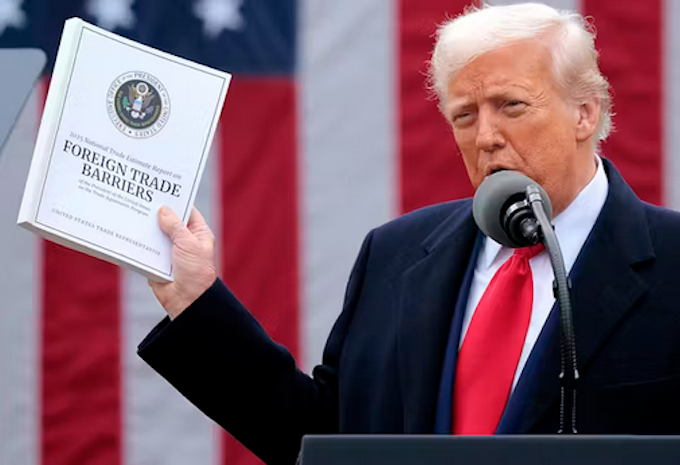By Caleb Fotheringham, RNZ Pacific journalist
Norfolk Island sees its United States tariff as an acknowledgment of independence from Australia.
Norfolk Island, despite being an Australian territory, has been included on Trump’s tariff list.
The territory has been given a 29 percent tariff, despite Australia getting only 10 percent.
It is home to just over 2000 people, sitting between New Zealand and Australia in the South Pacific
The islands’ Chamber of Commerce said the decision by the US “raises critical questions about Norfolk Island’s international recognition as an independent sovereign nation” and Norfolk Island not being part of Australia.
“The classification of Norfolk Island as distinct from Australia in this tariff decision reinforces what the Norfolk Island community has long asserted: Norfolk Island is not an extension of Australia.”
Norfolk Island previously had a significant level of autonomy from Australia, but was absorbed directly into the country’s local government system in 2015.
Norfolk Islanders angered
The move angered many Norfolk Island people and inspired a number of campaigns, including appeals to the United Nations and the International Court of Justice, by groups wishing to re-establish a measure of their autonomy, or to sue for independence.
The Chamber of Commerce has taken the tariff as a chance to reemphasis the islands’ call for independence, including, “restoration of economic rights” and exclusive access to its exclusive economic zone.
The statement said Norfolk Island is a “sovereign nation [and] must have the ability to engage directly with international trade partners rather than through Australian officials who do not represent Norfolk Island’s interests”.
Australian Prime Minister Anthony Albanese told reporters yesterday: “Norfolk Island has got a 29 percent tariff. I’m not quite sure that Norfolk Island, with respect to it, is a trade competitor with the giant economy of the United States.”
“But that just shows and exemplifies the fact that nowhere on Earth is safe from this.”
The base tariff of 10 percent is also included for Tokelau, a non-self-governing territory of New Zealand, with a population of only about 1500 people living on the atoll islands.

US ‘don’t really understand’, says PANG
Pacific Network on Globalisation (PANG) deputy coordinator Adam Wolfenden said he did not understand why Norfolk Island and Tokelau were added to the tariff list.
“I think this reflects the approach that’s been taken, which seems very rushed and very divorced from a common sense approach,” Wolfenden said.
“The inclusion of these territories, to me, is indicative that they don’t really understand what they’re doing.”
In the Pacific, Fiji is set to be charged the most at 32 percent.
Nauru has been slapped with a 30 percent tariff, Vanuatu 22 percent, and other Pacific nations were given the 10 percent base tariff.
This article is republished under a community partnership agreement with RNZ.
This content originally appeared on Asia Pacific Report and was authored by APR editor.
